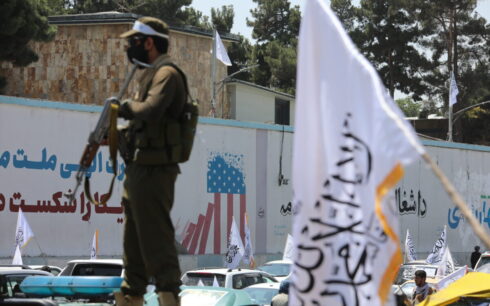KABUL, Afghanistan — For Setara, a pseudonym she chose to protect her identity, the dream of a better life led her down a perilous path. Alongside her husband and family, she embarked on an irregular migration journey from Afghanistan to Iran, one fraught with hunger, exhaustion, and inhumane conditions in human smuggling camps.
Speaking anonymously due to security concerns, Setara shared her story of survival, urging others to avoid what she called a “path of hardship and despair.”
A journey begins in desperation
Setara’s journey started in Nimroz Province, a notorious hub for human trafficking networks. The family endured two days in a smuggling camp that she described as lacking even the most basic necessities.
“There was no food, no water, and no place to stay,” Setara said. “The conditions were unbearable. After two days, we were told to move toward Pakistan.”
The journey quickly became more grueling as they approached the border. Smugglers crammed 15 people into vehicles designed for far fewer passengers, exposing them to extreme heat and discomfort.
“The heat was so intense that my scalp and hair were damaged,” Setara recounted. “Every hour, the difficulties became heavier and more complicated.”
Treacherous mountain crossings
One of the most harrowing parts of the journey was crossing mountainous terrain on foot, a trek that lasted hours and carried the constant risk of fatal falls.
“The mountain paths were so steep and dangerous that if you slipped, you wouldn’t survive,” Setara said. “People had to discard their belongings because carrying anything extra was impossible. All we could manage was a small bag and the clothes we were wearing.”
Setara described the scene in Pakistan as chaotic. “It felt like all of Afghanistan was heading to Iran,” she said. “People were in terrible conditions, throwing away their belongings because they couldn’t carry them any longer.”
Inhumane conditions in smuggling camps
The lack of food and water compounded the physical and emotional toll of the journey, but Setara found the conditions in smuggling camps particularly appalling.
“We walked for over 12 hours, and our feet were covered in blisters,” she said. “The camps we were taken to were uninhabitable—places where no human being should ever live. We had no food, and if any was available, it was dry bread that was barely edible.”
The smugglers treated migrants as commodities, passing them from one group to another. “We were handed off like goods, moving from one smuggler to the next until we reached our destination,” she said.
A harsh reality in Iran
Setara and her family eventually reached Iran, but the challenges did not end there. As undocumented migrants, they faced significant discrimination and harsh living conditions.
“There were no jobs for Afghans,” Setara said. “Employers told us they weren’t allowed to hire Afghans. We had no home and often spent nights on the streets because we had nowhere else to go.”
The situation worsened when Iranian authorities detained her husband and forcibly deported him back to Afghanistan. With no other options, Setara returned to Afghanistan as well, disillusioned by the journey and its aftermath.
Reflecting on her experience, Setara described irregular migration as a dangerous and dehumanizing process. She urged others not to follow the same path.
“My message to anyone thinking about leaving Afghanistan illegally is simple: Don’t do it,” she said. “The journey is too dangerous. Smugglers push people to move quickly to avoid detection by border guards, but those guards often shoot directly at migrants, killing many.”
Economic hardship, unemployment, and political instability have driven countless Afghans to embark on irregular migration routes in search of a better life. Yet, for many, the journey leads to suffering, exploitation, and tragedy.
The testimonies of survivors like Setara reveal the stark realities of these dangerous routes, from physical abuse and life-threatening conditions to the emotional toll of displacement and uncertainty. Her story is one of many, each marked by pain, resilience, and the hope for a future beyond poverty and insecurity.





